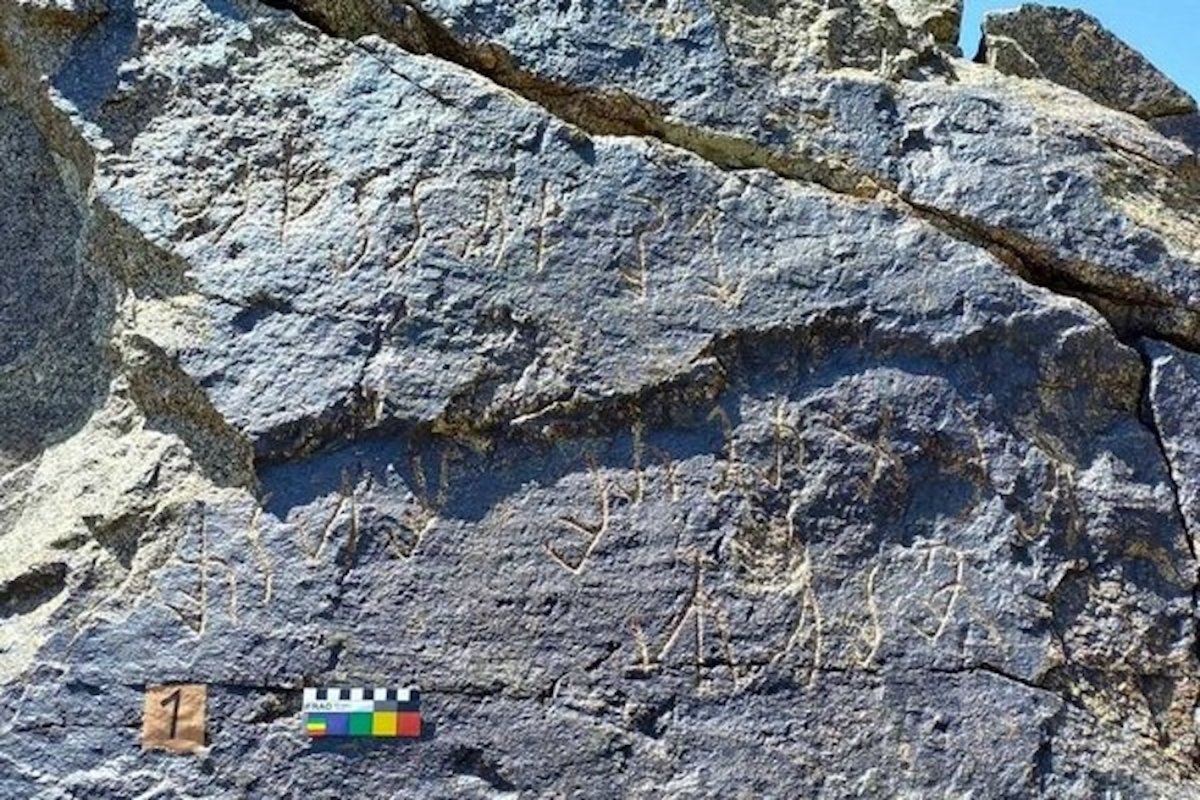Researchers have managed to decode an ancient script that scholars have been unable to understand for decades.
In a study published in the journal Transactions of the Philological Society, a team of scientists describe how they partially deciphered the "unknown" Kushan script, an ancient writing system that was once in use in parts of Central Asia between around 200 B.C. and 700 A.D.
It has been associated with early nomadic peoples of the Eurasian steppe, such as the Yuèzhī, and one of their ruling dynasties, the Kushans, who founded a large empire encompassing much of what is now Uzbekistan, Afghanistan, Pakistan and northern India.
The Kushan Empire is notable for having facilitated the spread of Buddhism to East Asia, as well as its monumental architecture and artworks.

The mysterious Kushan script has been known since the 1950s but had never been successfully deciphered. Several dozen, mostly short inscriptions, written in the Kushan script have been found to date, most originating from the territory of the modern nations of Tajikistan, Afghanistan and Uzbekistan.
In the 1960s, a longer inscription written alongside two other known ancient languages was discovered by French archaeologists in Afghanistan on a boulder located at an altitude of more than 14,000 feet on Mount Qarabayu—around 60 miles southwest of Kabul.
Last year, a short inscription featuring the unknown script alongside the already-known Bactrian language was found carved onto a rock face in the Almosi Gorge in northwestern Tajikistan. This discovery sparked renewed attempts by several researchers to decode the mysterious Kushan script.
Ultimately, linguists at the University of Cologne in Germany succeeded in partially deciphering the writing system in collaboration with Tajik archaeologist Bobomullo Bobomulloev, who was involved in the discovery of the recent bilingual inscription.
To decode the unknown script, the team used a methodology that has previously been used to decipher other ancient writing systems. A prominent example is how researchers deciphered Ancient Egyptian hieroglyphs with the help of the Rosetta Stone, which contained the same content in the already-known language of Ancient Greek.
"In short, we copied the method that led to the decipherment of the ancient Egyptian hieroglyphs or Old Persian cuneiform," Svenja Bonmann, an author of the study from the University of Cologne told Newsweek.
Using the known content of the bilingual inscription recently found in Tajikistan and those from the trilingual inscription discovered in Afghanistan in the 1960s, the team was gradually able to uncover information about the writing system and the language it represents.
So far, the researchers have managed to decipher 60 percent of the known characters and are working to decode the remaining 40 percent.
"The part that we could decipher so far contains a royal address of the king Vema Takhtu of the Kushans," Bonmann said. "The details of the rest call for further decipherment."
According to the study, the deciphering of the unknown script has revealed the existence of a previously unknown Middle Iranian language.
This newly uncovered language is neither identical to Bactrian—an extinct Iranian language—nor Khotanese Saka, which was once spoken in western China.
The previously unknown language seems to have served as one of the official languages of the Kushan Empire alongside Bactrian, Middle Indo-Aryan and Sanskrit, the researchers said. They have given it the preliminary name of "Eteo-Tocharian," according to the study.
"Our findings widen our knowledge of the history of ancient Central Asia," Bonmann said.
Uncommon Knowledge
Newsweek is committed to challenging conventional wisdom and finding connections in the search for common ground.
Newsweek is committed to challenging conventional wisdom and finding connections in the search for common ground.
About the writer
Aristos is a Newsweek science reporter with the London, U.K., bureau. He reports on science and health topics, including; animal, ... Read more
To read how Newsweek uses AI as a newsroom tool, Click here.






